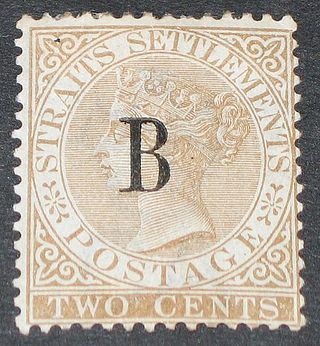
A post office is a public facility and a retailer that provides mail services, such as accepting letters and parcels, providing post office boxes, and selling postage stamps, packaging, and stationery. Post offices may offer additional services, which vary by country. These include providing and accepting government forms, and processing government services and fees. The chief administrator of a post office is called a postmaster.

A postmark is a postal marking made on an envelope, parcel, postcard or the like, indicating the place, date and time that the item was delivered into the care of a postal service, or sometimes indicating where and when received or in transit. Modern postmarks are often applied simultaneously with the cancellation or killer that marks postage stamps as having been used. Sometimes a postmark alone is used to cancel stamps, and the two terms are often used interchangeably. Postmarks may be applied by handstamp or machine, using methods such as rollers or inkjets, while digital postmarks are a recent innovation.

Singapore Telecommunications Limited, commonly known as Singtel, is a Singaporean telecommunications conglomerate, the country's principal fixed-line operator and one of the four major mobile network operators operating in the country.

Australia Post, formally known as the Australian Postal Corporation, is a Commonwealth government-owned corporation that provides postal services throughout Australia. Australia Post's head office is located on Bourke Street, Melbourne, above the Bourke Street Post Office.

Jersey Post is the licensed universal service provider of mail service for the Bailiwick of Jersey.
The Infocomm Media Development Authority (IMDA) is a statutory board under the Singapore Ministry of Communications and Information (MCI).

This is a survey of the postage stamps and postal history of the British post office in Bangkok, Thailand.

Post Danmark A/S is the national provider of postal services in Denmark. It was established as a fully state-owned stock holder's company in 1995 following political liberalization efforts. Post Danmark had taken over the mail delivery concession of its predecessor, the governmental department Postvæsenet, which was established in 1624. Post Danmark A/S was turned into a public limited company in 2002. In 2005, 22% of the company shares were sold to CVC Capital Partners, 3.5% of the company shares were partly sold to employees at a discount, partly kept in reserve for a management incentives program. In 2009, it was merged with the Swedish Posten AB to form PostNord, a joint postal service company between Denmark and Sweden.

Pos Malaysia Berhad is a postal delivery service in Malaysia, with history dating back to early 1800s.
Pakistan Post is a state enterprise which functions as Pakistan's primary and largest postal operator. 49,502 employees through a vehicle fleet of 5,000 operate traditional "to the door" service from more than 13,419 post offices across the country, servicing over 50 million people. Pakistan Post operates under the autonomous "Postal Services Management Board" to deliver a full range of delivery, logistics and fulfillment services to customers.

La Poste is a postal service company in France, operating in Metropolitan France, the five French overseas departments and regions and the overseas collectivity of Saint Pierre and Miquelon. Under bilateral agreements, La Poste also has responsibility for mail services in Monaco through La Poste Monaco and in Andorra alongside the Spanish company Correos.

The Department of Posts, functioning under the brand name Sri Lanka Post, is a government operated postal system in Sri Lanka. The postal headquarters is the General Post Office which is located in Colombo. The department itself comes under the purview of the Ministry of Information and Mass Media. It was formerly known as the Ceylon Post and Telecommunications Department and is one of the oldest Government departments in existence today.

Wireless@SG is a wireless broadband programme developed by the Infocomm Development Authority (IDA) of Singapore as part of its Next Generation National Infocomm Infrastructure initiative, being part of the nation's 10-year masterplan called Intelligent Nation 2015 (iN2015).

HP-Hrvatska pošta d.d., founded in 1999, is a state-owned joint-stock company in Croatia that performs postal and payment transactions. It is the national postal operator of the Republic of Croatia.

The Palestinian National Authority began in 1994 to issue stamps and operate postal services as authorized by the Oslo Accords.

Mobile post offices deliver mail and other postal services through specially equipped vehicles, such as trucks and trains.

Österreichische Post is the company responsible for postal service in Austria. This company was established in 1999 after its split-off from the mail corporate division of the former state-owned PTT agency Post- und Telegraphenverwaltung. It is listed on the Vienna Stock Exchange.

Postage stamps and postal history of Singapore surveys postal history from Singapore and the postage stamps issued by that country and its various historical territories until the present day. Postal service in Singapore began with the delivery of stampless letters whose cost was borne by the receiving person, later encompassed pre-paid letters carried by private mail carriers and provisional post offices, and culminated in a system of universal prepayment that required all letters to bear nationally issued adhesive postage stamps. Singapore is an island country off maritime Southeast Asia, located between the Straits of Malacca and the South China Sea.

This is a survey of the postal history and postage stamps of Thailand.

The U.S. Parcel Post stamps of 1912–13 were the first such stamps issued by the U.S. Post Office Department and consisted of twelve denominations to pay the postage on parcels weighing 16 ounces and more, with each denomination printed in the same color of "carmine-rose". Their border design was similar while each denomination of stamp bore its own distinctive image in the center (vignette). Unlike regular postage items, whose rates were determined by weight in ounces, Parcel Post rates were determined and measured by increments in pounds. The new stamps were soon widely used by industry, farmers and others who lived in rural areas. Partly owing to some confusion involving their usage, their exclusive use as Parcel Post stamps proved short lived, as regular postage stamps were soon allowed to be used to pay parcel postage rates.





















